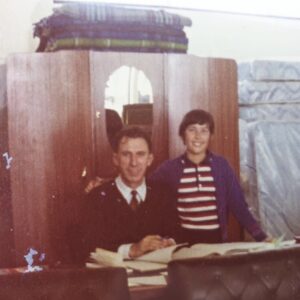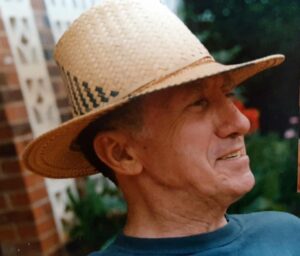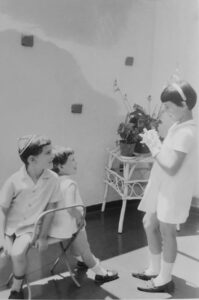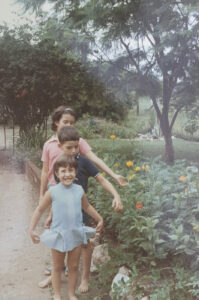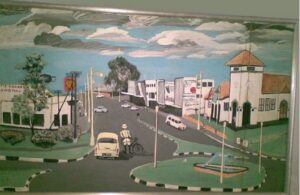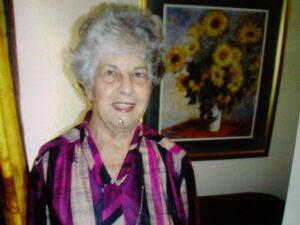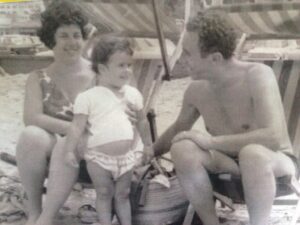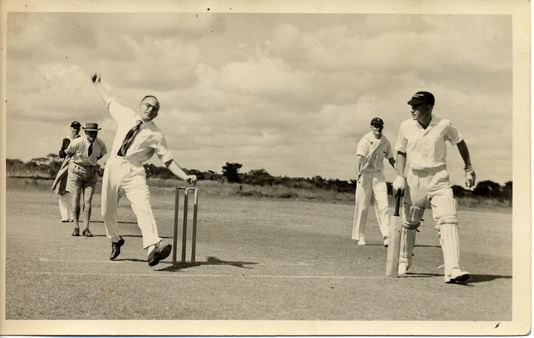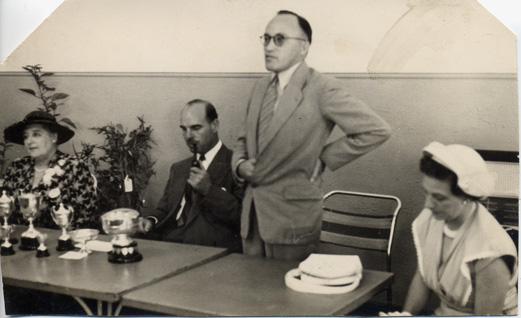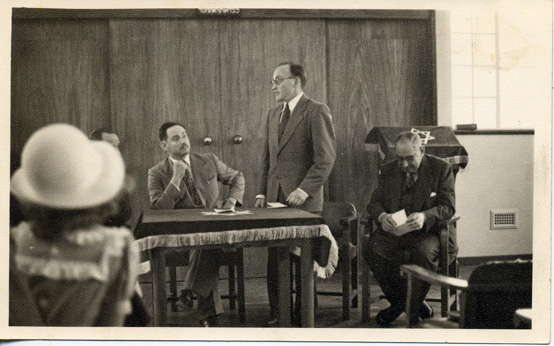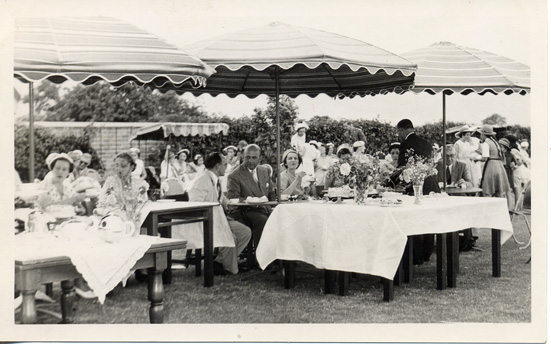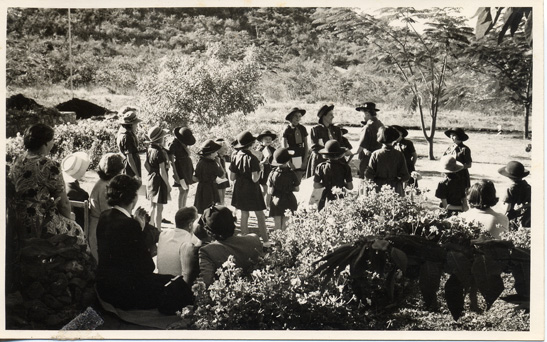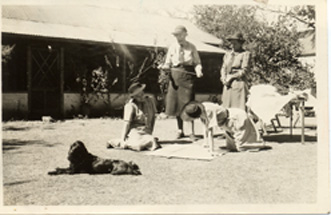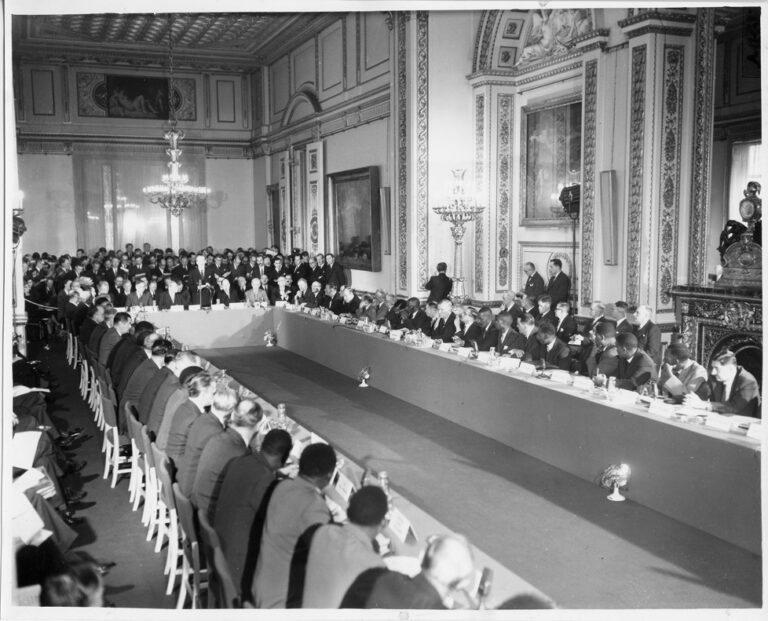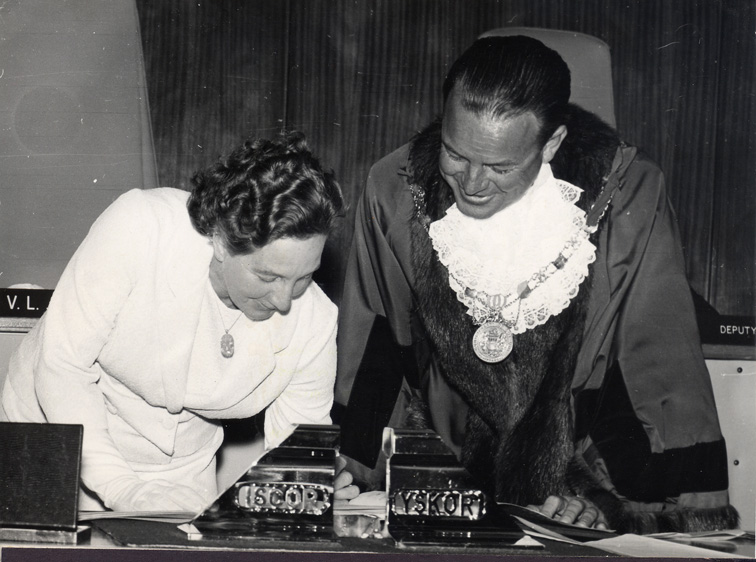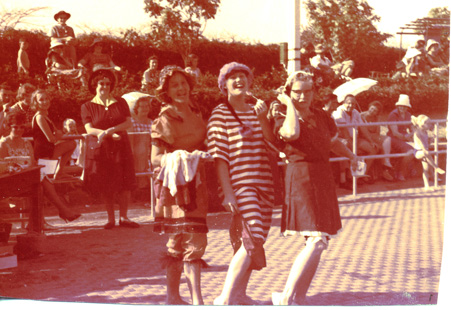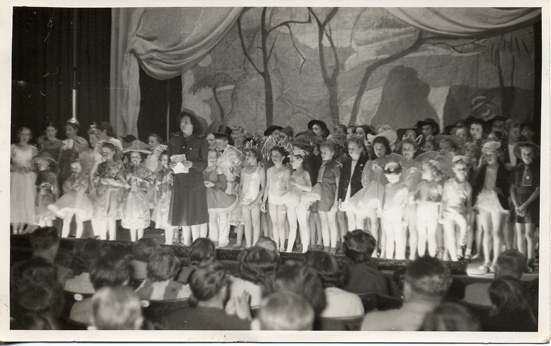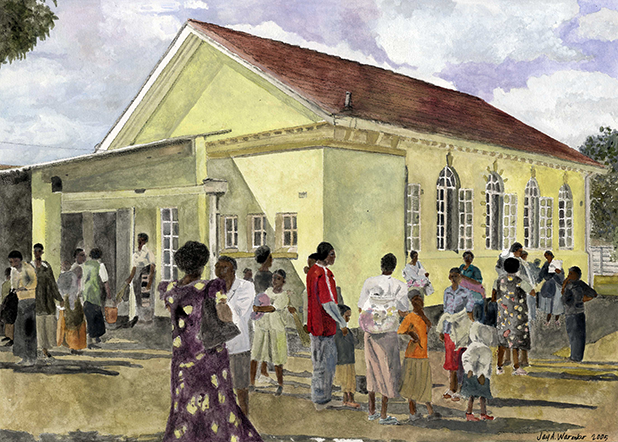
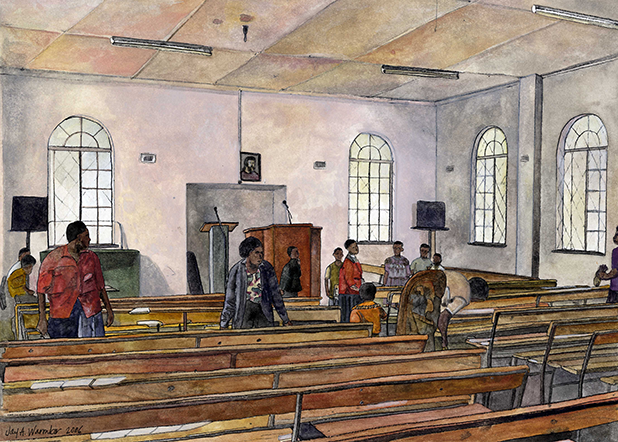
See short text report below of Jay Waronker’s visit to KweKwe in 2005 when he painted the above watercolours.
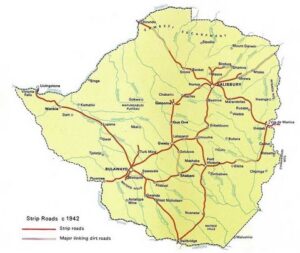
KweKwe Jewish Community
A few former members of the KweKwe (QueQue) Jewish Community have written books, stories and biographies of their family members which tells about the small community in the midlands of Zimbabwe between Kadoma (Gatooma) and Gweru (Gwelo).
(The following short text with courtesy of kehilalinks.jewishgen.org.kwekwe – contributed by Ed Goldberg)
In 1949/1950 Que Que had a Jewish population of about 70 persons, about 21 families. I use the word, about, as some came and some went in the 50s. Also, some passed away.
There is a link to the Jewish residents of Que Que further down this page.
The best known families were the Slomans (Solly and Mottel ) who owned Sloman’s Stores , the largest departmental store (and the only one, except for Que Que Stores which closed down in about 1953) in town. It sold just about everything, if you could find it; the store was in such a mess! Solly was a true philantropist, and he looked after all the down and outs of town, mainly gold smallworkers.His son-in-law, Mr Schmerel also worked in the store.
Then there was Mr Rick, who owned a furniture shop and also sold bicycles; he passed away. Working for him as bookkeeper was old Mrs Bertha Haimowitz, whose husband died in about 1951.
The only bakery in town, the Midlands Bakery was owned and run by Barbara Mamlok’s father Harry Malkow and Maurice Teperson.
The Phillipsons lived on a farm outside Que Que and their son , Elmer, is a Veterinarian who lives on Vancouver Island.
Dr. Morris Hirsch was the city doctor and he was elected Mayor and later a member of Parliament. His daughter Diana Hirsch Polisensky has written extensively on life in the Midlands. See below for more details.
Isaac Goldberg was the chief geologist on the Globe and Phoenix Gold Mine. For a detailed biography of Isaac click here
The concession store on the Gaika mine was owned by Barney Kahn. Mrs Kahn ran the butchery, Barney imported Rhodesia’s first Cadilac but he couldn’t drive it at first. He got a licence for himself and Dora without being tested!! She only knew how to go forward, but couldn’t back-up! Such was the life!
The community had a tiny synagogue on Burma road, across the main railway line. They managed to hold services on most yomtavim, led by one of the locals.
Kosher meat used to come from Bulawayo, with the train coming in at midnight. In the summer, the meat did not smell so good.
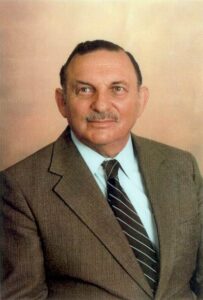
The Bradt family of Que Que.
My late father, Ya’akov (Jacob) Bradt born in Darabani, Romania was a survivor of WW2 and the Nazi concentration camps of Tropova in the Ukraine, later the British Detention Camp for Jewish Immigrants where he spent a year outside Famagusta, Cyprus. Still later a member of the Haganah and Palmach and eventually the IDF fighting (and sustaining injury during) the War of Independence in 1948 in Israel.
Queenie Bradt (nee Lewitton) was the daughter of Lithuanian emigrants and coffee merchant father from Port Elizabeth, South Africa. Having grown up there she travelled to Bulawayo on holiday one year and met my father. They married soon after.
Living in the house next to the Shul my parents, the late Jacob and Queenie Bradt, having married at the Emerentia Shul in Johannesburg in 1960, arrived by car to Que Que en route to then Salisbury. Looking to purchase a business and establish a home, they stopped at the Sebakwe Hotel for a cold drink, when they met Morris Tepperson and Harry Mallow who were coincidentally selling a mine store at Battlefields, some 25 miles out of town, near Inyati. They persuaded my parents to purchase the store and join the small Que Que Hebrew Congregation which they did.
We lived at 13 Burma Road, just around the corner from the Ash family, and Slomans and up the road from Ralph Schatill and the Kerils. I, together with my brother Laurence and my sister Aviva, was born in Que Que. We attended school there – Que Que Junior, followed by Que Que High – receiving an excellent English education, went to Shul on Shabbat, and holidays and eventually joined Bnei Akiva – even though the nearest branch was in Salisbury at the time.
My late father in later years sold Battlefields and set up a furniture business in town called: Furniture & Gift Centre. An avid chess player, chess tournaments were held at the Que Que Hotel, attended by Rhodesia’s Jewish top player champions. Both my late dad and his best friend the late Simon Ash practised playing for months so that they could be ready to compete! In 1978, as a family, we emigrated to Israel. Our Israeli family welcomed us with open arms.
My mother unfortunately never quite settled there and although South African by birth, she missed Zimbabwe tremendously. They returned some 2.5 years later first to QQ then a short while later to Bulawayo where they lived and re-established as members of the Bulawayo Jewish Community until their passing in 2001 and 2007 respectively. Both buried in Bulawayo. I now live in Johannesburg with my husband Joel. Aviva too lives nearby. Laurence remained in Israel where he lives today. He has two grown sons, Yonathan who works in Israel hi-tech in USA and Yishai who is a professional musician.
Ed Goldberg
My Dad, Isaac Goldberg lived a full and accomplished life. He was born in Siaulia, Lithuania on the 1st February, 1925 – his father had come from Baisogala, Lithuania and his mother from Rostov-on-the-Don in Russia. He had two sisters, one of whom – Judith Katz – still lives in Johannesburg. His other sister – Pola Segall – died in 1993. He arrived in South Africa in about 1930 and stayed in the small town of Rouxville for a couple of years. Interestingly enough the first language that he learnt in his new country was Afrikaans and until then had only known Yiddish and Russian. His first exposure to English was when the family moved to Livingstone, Northern Rhodesia in 1933. Livingstone is right at the Victoria Falls on the border with Southern Rhodesia. He had fond memories of his stay in Livingstone and after a short stay there the family moved to Caledon in the Cape and then to Uitenhage in 1936. His schooling in Uitenhage was at Muir College and he matriculated at age 16 with Geology as one of his subjects. He was a top student and a top athlete and was involved in rugby, boxing and athletics. His long jump record stood for over 20 years before it was broken.
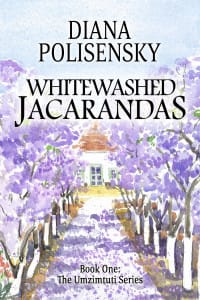
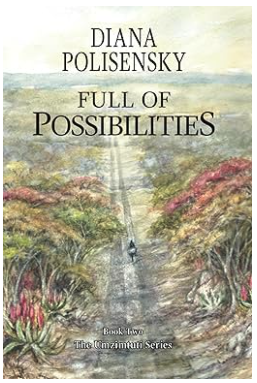
Diana Hirsch Polisensky
(Courtesy Jay Waronker and his amazing work to record the synagogues of Africa – see https://www.africansynagogues.org/index.html
Along the main road that connects Bulawayo in the south with northern Harare is Zimbabwe’s Midlands, the central region of the country once contained prime farmland that produced a variety of bountiful crops and products enough to fed the country and region. Within the Midlands are three small cities that for some decades had Jewish communities: Gweru, Kwekwe, and, Kadoma. The Highlands city of Mutare, to the east near the border with Mozambique, also had a Jewish community. For years these communities managed by conducting prayer services in private homes or temporary facilities, but by the 1930s to early 1940s, except for Mutare, they were large and sustainable enough to need proper synagogues. In Kwekwe, a modest one was constructed on Burma Road in a quiet district just southeast of town. Made up of a foyer, office space, support areas, and a 34’ x 52’ sanctuary, the painted stucco-clad masonry building with its gabled roof served its congregation of Jews for some four decades.
At the time of this painting (see above), the interior of the former synagogue had changed little from its original design: a rectangular space with long rows of pews, the niche for the ark was now removed and above it a framed image of Christ, large metal casement windows with rounded arched-top along the painted plaster walls, and a ceiling with batten strips dividing the flat panels. The original lighting had been replaced by fixtures with naked fluorescent tubes.
By the 1980s, the Jewish population in Kwekwe had so declined that the building was no longer needed. In good condition and conveniently located, it was sold by the Jews to the local Hindu community who used it for some years for their communal purposes. Eventually the Hindus outgrew it and built a more proper temple on adjacent property. The former synagogue was next rented to a black African church, and they were lovingly using the building at the time this watercolor was completed. When the artist of this painting visited the building on a Sunday afternoon, he was first graciously invited by a leader of the congregation to come inside to participate in a lively service. After the service, while the building was being cleaned by women of the congregation, Waronker was permitted to document the former synagogue before he was driven by church members to catch a very crowded bus onward to Harare.
The pictures below courtesy Ed Goldberg.
